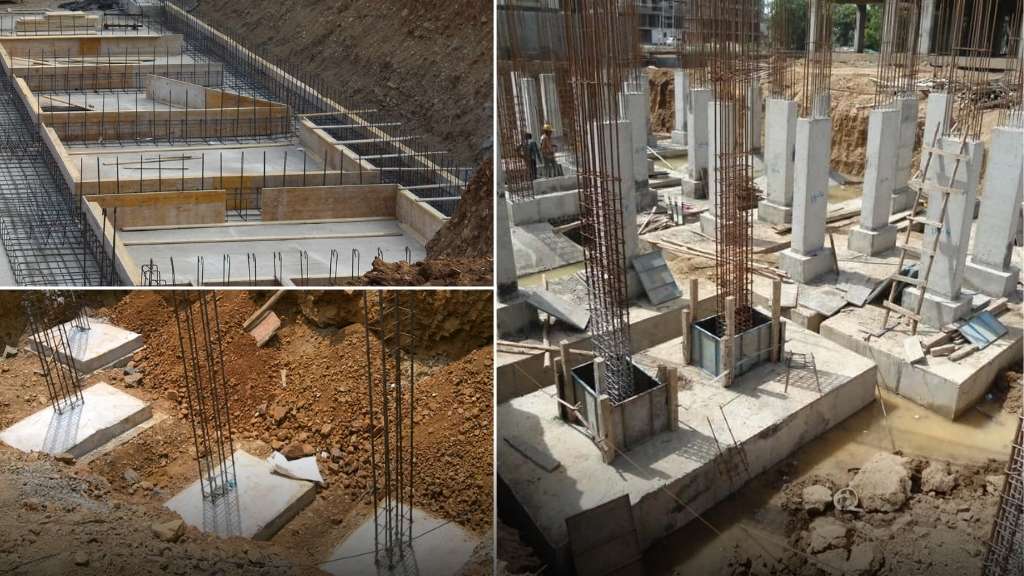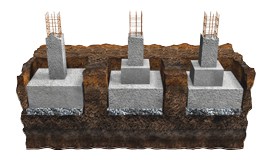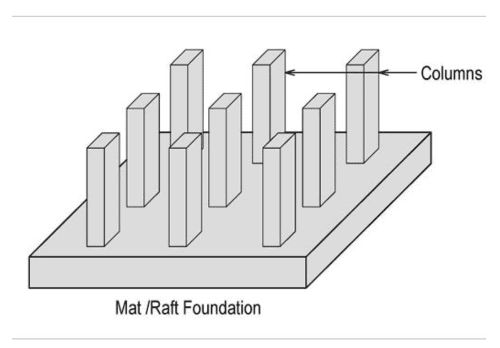Property Geek
We provide the actual and accurate information with unbiased user driven reviews to our viewers, to help them see the best and find the best!
View posts
Foundations are the bedrock upon which every structure is built. They provide the necessary support and stability to ensure the integrity and durability of buildings, bridges, and other constructions. The selection of an appropriate foundation is crucial as it depends on factors such as soil conditions, structural design, and anticipated loads.
Different types of foundations are employed to accommodate a variety of soil conditions, structural configurations, and load requirements. From deep foundations that penetrate deep into the ground to shallow foundations that bear loads near the surface, each type offers unique advantages and is tailored to specific scenarios. Shallow foundations are suitable when the soil near the surface has sufficient bearing capacity. They spread the weight of the structure over a larger area, distributing the loads to prevent excessive settlement and maintain stability.
In this article, we will discuss different types of shallow foundations and their functionalities. So, let’s get started.

Strip footings are types of shallow foundations that are commonly used to support continuous walls or closely spaced columns. They are long and narrow in shape, typically rectangular, and extend along the length of the wall or row of columns they are supporting.
Strip footings are to distribute the load from the structure evenly along the length of the footing. When a wall or a row of columns exerts vertical loads, these loads are transferred to the strip footing, which then transmits them to the underlying soil.
Strip footings are designed to ensure that the pressure applied by the structure to the soil does not exceed the safe bearing capacity of the soil. By spreading the load over a larger area, strip footings help prevent excessive settlement and ensure the stability of the supported elements.
Reinforcement is often incorporated into strip footings to enhance their strength and prevent cracking. The reinforcement can be in the form of steel bars or wire mesh embedded within the concrete. This helps increase the structural integrity of the footing and improves its ability to withstand bending and shear forces.

Spread or isolated footings are individual footings that are used to support isolated columns or piers in a structure. They are designed to transfer the load from the column or pier directly to the underlying soil, ensuring the stability and safety of the structure.
Spread footings come in various shapes, such as square, rectangular, or circular, depending on the specific design requirements and the load-bearing capacity of the soil. The choice of shape is often determined by factors such as the column configuration, the magnitude of the loads, and the available space for the footing.
Spread footings spread the load from the column or pier over a larger area of the soil. By doing so, they help prevent excessive settlement and ensure that the pressure applied to the soil does not exceed its bearing capacity. This is achieved by increasing the contact area between the footing and the soil, reducing the stress on the soil, and minimizing the risk of soil failure.
The dimensions of spread footings are determined through engineering calculations that take into account factors such as the column load, soil properties, and allowable bearing pressure. The width and depth of the footing are designed to ensure that the applied loads are safely transferred to the soil without causing excessive settlement or structural instability.

Combined footings are a type of shallow foundation that is used when two or more columns are close to each other, and their individual footings would overlap if separate footings were used. In such cases, a combined footing is designed to support multiple columns and distribute the load to the underlying soil.
Combined footing provides a stable and efficient foundation solution while minimizing the use of additional materials and construction complexity. By combining the footings of adjacent columns into a single footing, the load from multiple columns is concentrated onto a larger area, reducing the intensity of the pressure on the soil.
To ensure the stability and load distribution of the combined footing, it is designed to be wider than a strip footing. The increased width helps spread the loads over a larger area and reduces the risk of excessive settlement or differential settlement between the supported columns.

Strap or cantilever footings, also known as tie beam footings, are used to connect two spread footings or isolated footings to support eccentrically loaded columns or walls. They provide a structural connection between the footings and help balance the unequal loads imposed by the supported elements.
Strap footings transfer the load from one footing to another and distribute it evenly between them. When a column or wall exerts an eccentric load, which means the load is not centered directly over the footing, it creates a moment or a turning force. Strap footings are designed to counterbalance this moment and ensure stability.
Strap footings consist of a reinforced concrete beam that spans between the two footings. The beam is usually constructed above the ground level, connecting the two isolated or spread footings. It acts as a tie or strap, transferring the load from the eccentrically loaded column or wall to the supporting footings. The beam helps distribute the load evenly between the footings, reducing the risk of differential settlement and maintaining structural stability.
Strap footings are particularly useful in situations where columns or walls are closely spaced and have eccentric loads. They provide an effective solution for balancing uneven loads and ensuring the overall stability of the structure.

A mat or raft foundation is one of the types of shallow foundations that consists of a large, thick slab of reinforced concrete that extends under the entire footprint of a building. It is designed to distribute the load of the structure over a large area to prevent excessive settlement and ensure the stability of the building.
Mat foundations spread the loads from the building evenly over a larger area of the soil. By doing so, it reduces the intensity of the pressure on the soil, which is particularly important when the soil has low bearing capacity or when there are uneven soil conditions.
Mat foundations are typically used in situations where the soil cannot adequately support the loads imposed by the building or where the soil conditions are variable. They are particularly suitable for buildings with heavy loads, such as high-rise structures or industrial facilities, as well as on soft or expansive soils that are prone to settlement or differential movement.
The selection of the appropriate types of shallow foundations is a crucial step in the design and construction of any structure. The choice depends on various factors, including soil conditions, structural configuration, and anticipated loads. The different types of foundations, such as deep foundations and shallow foundations, offer distinct advantages and are tailored to meet specific requirements.
By understanding the characteristics, functions, and design considerations of different types of shallow foundations, architects, engineers, and construction professionals can make informed decisions to ensure the stability, safety, and longevity of the structures they design and build.
A foundation is a structural element that supports and transfers the loads from a building to the underlying soil. Shallow foundations are constructed near the ground surface and include types such as strip footings, spread or isolated footings, combined footings, strap or cantilever footings, and mat or raft foundations.
Shallow foundations are used in construction projects where the soil near the surface has sufficient bearing capacity. They are commonly used in residential buildings, small to medium-sized commercial structures, and light industrial facilities.
Shallow foundations are important because they distribute a load of a structure over a larger area, preventing excessive settlement and ensuring stability. They are also cost-effective and easier to construct and maintain compared to deep foundations.